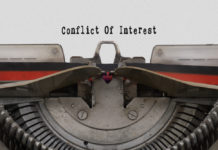DoD carelessly made hundreds of thousands of unauthorized copies of the contractor’s software. DoD then tried to destroy the extra copies to hide evidence. The COFC drew an adverse inference, found the government liable for infringement, but awarded a fraction of the damages sought by the contractor.
4DD Holdings, LLC, and T4 Data Group, LLC v. United States, COFC No. 15-945C
- Software License – DoD entered a contract with a prime contractor to harmonize healthcare information stored in various databases. The prime selected decided to use commercial software developed by another company, 4DD. DoD entered a software licensing agreement with 4DD. DoD licensed 64 cores (or computers) and 50 individual seats.
- Government Makes Unauthorized Copies – DoD was not careful about tracking copies of the software. DoD instituted a tracking method but never bothered to check it. As a result, DoD ended up copying the software multiple times when it backed-up the system or cloned virtual machines.
- Government Destroys Evidence – 4DD sued for copyright infringement. During discovery, 4DD learned the government had destroyed copies of the software on DoD’s system, and it destroyed laptops with the contained the copies. The court sanctioned the government for the destruction by drawing an adverse inference.
- Release – The government argued that 4DD had released any claim for copyright infringement. Before 4DD filed suit, the parties met to discuss the excessive copies. The government argued the parties had agreed to a payment for excess copies and released its claims. The court rejected this, reasoning the release was void due to DoD’s fraud. DoD made several misrepresentations to obtain the alleged settlement. It had not disclosed that it had destroyed some of the copies, and it lied about verifying the number of copies.
- Equitable Estoppel – The government contended 4DD was equitably estopped from suing for infringement. The government reasoned 4DD delayed in suing even though it knew of the alleged infringements. The court rejected the government’s equitable defense. A party cannot assert an equitable defense like estoppel unless they have clean hands. Here, the government had destroyed evidence; it had unclean hands.
- Number of Copies – 4DD presented evidence showing the government had hundreds of thousands of copies of the software. The government had not rebutted this evidence. The court accepted the government made hundreds of thousands of copies.
- Royalty Rate – 4DD argued it was entitled to royalty rate for each violation. Each license cost about $17,000. Given the number of copies, this would result in damages between $3 and $5 billion. The court opined that the royalty rate was not the proper measure of damages. Indeed, 4DD had never sold the software to anyone but the government. The company could not claim it had an established royalty rate.
- Hypothetical Negotiations – When an infringement has not resulted in lost sales or diminished the copyright’s value, the court will determine a reasonable license fee using a hypothetical negotiation between the parties. Here, the court found the government had a stronger bargaining position. Indeed, 4DD had not sold the software to other customers. And the software provided the government with little value. The court found the parties would have negotiated $2400 per computer development license fee. For the non-backup copies, this resulted in $9 million in damages. For the backups, the court found the government would agree to convenience fee of $1.8 million.
The claimant is represented by Roman M. Silberfeld, Ronald J. Schultz, Christopher K. Larus, Brian J. Mechell, Jessica Gutierrez, Zac Cohen, and Stephanie Q. Quartararo. The government is represented by John H. Todor, Brian Boynton, Patricia M. McCarthy, Elizabeth M. Hosford, Scott Bolden, Rachel HIcks, Andrew Hunter, and Stephen Smith.
–Case summary by Craig LaChance, Senior Editor




